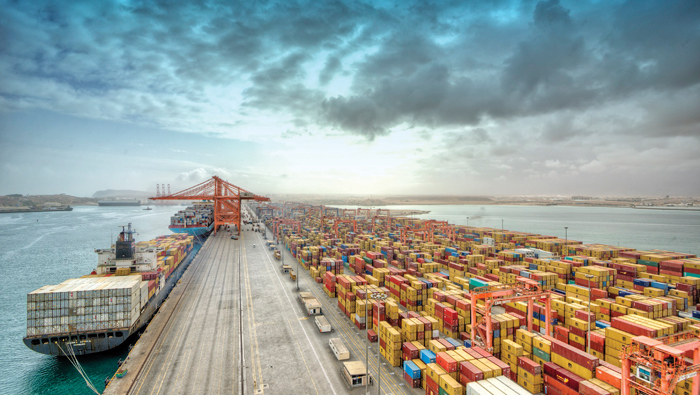
Muscat: Sohar Port in Oman enjoyed one of its best years ever in 2017, as Oman’s drive to steer away from oil dependency appears to be kicking in.
The Sultanate has been diversifying away from oil and one of its biggest investments is logistics.
Oman is ideally placed in the Gulf to carve out a lucrative niche in this sector, according to the Ministry of Transport & Communications.
The efforts seem to be bearing fruit. In 2017, Sohar Port enjoyed a 26 per cent hike in traffic.
A Ministry of Transport statement confirmed the spike, adding: “Sohar Port is a specialised port for general cargo, containers and liquid materials.
The port area is more than 45 square kilometres and it contains 22 berths.
Free zone
The port also connects the Sohar Free Zone which attracts local and international investments and is increasing the volume of handling. “The port received a total of 2,224 vessels by the end of September 2017, compared to 1,761 vessels during the same period of 2016 - a rise of 26.3 per cent.”
Delighted transport bosses now hope they can achieve the same results with other ports under their control.
The Ministry of Transport and Communications wants the Sultanate to be one of the top ten logistics performers in the world by 2040, and the sector the second source of national income after oil.
It manages two commercial ports, Salalah Port and Sohar Port, as well as the secondary ports of Khasab Port and Shinas Port.
Salalah Port also has a bright future, under the move to boost the country’s logistics sector.
“Salalah Port is the hub for the distribution and transport of containers in the region because of its strategic location overlooking the Indian Ocean and touching the international shipping lines.
“The port area is 1,071 square kilometres and contains 22 berths.
At the end of September 2017, the port of Salalah received approximately 1,743 vessels.
The Ministry statement adds: “The Sultanate of Oman has over the years established and developed the infrastructure of many commercial and industrial ports and seaports, in the belief that the government plays an important role in enhancing the economic and social sector and diversifying sources of national income and attract foreign investment.”
The port of Shinas is seen as one of the most important ports in Oman in terms of dealings with neighbouring countries, the ministry stated.
Wharves for trade
Medium-sized commercial ships, wooden ships and fishing vessels ply their trade in the handling of livestock and agricultural products through this point of entry. The port has witnessed many developments, such as the provision of wharves for trade and fishing activities.
Khasab port in Musandam Governorate has enjoyed great strategic importance because of its proximity to the Hormuz Strait, and contributes to the local economy of the governorate and the Sultanate in general.
The port received 37 cruise ships with 72,141 tourists by the end of September 2017. “The vision of Transport and Communications Ministry is to be a leader in the transport and communications sector by providing high quality, sustainable and safe services that take into account their community responsibility.”
Businessmen involved in cargo clearing and transportation at Sohar Port said that the rise of Sohar Port is eminent.
“This is simply because Sohar Port is ideal for every kind of trade, as it is optimally located outside the congested Strait of Hormuz but still close to all the important markets in the region,” said A Khan, a clearing agent in Sohar Port said.
A top official of logistics company at Oman, Sushil Kumar said: “Combined with our world-class terminal operators, this inevitably makes Sohar the preferred, regional port of call.”
Sohar Port and Freezone is a deep sea port and free zone situated midway between Dubai and Muscat.
Fastest growing port
Sohar now ranks as one of the world’s fastest growing port and free zone developments and is fast becoming one of the Middle East’s prime industrial and logistical hubs.
The industrial area has received investments of more than $26 billion and the port handles one million tonnes of cargo throughput each week, with more than 2,600 ships berthing every year.